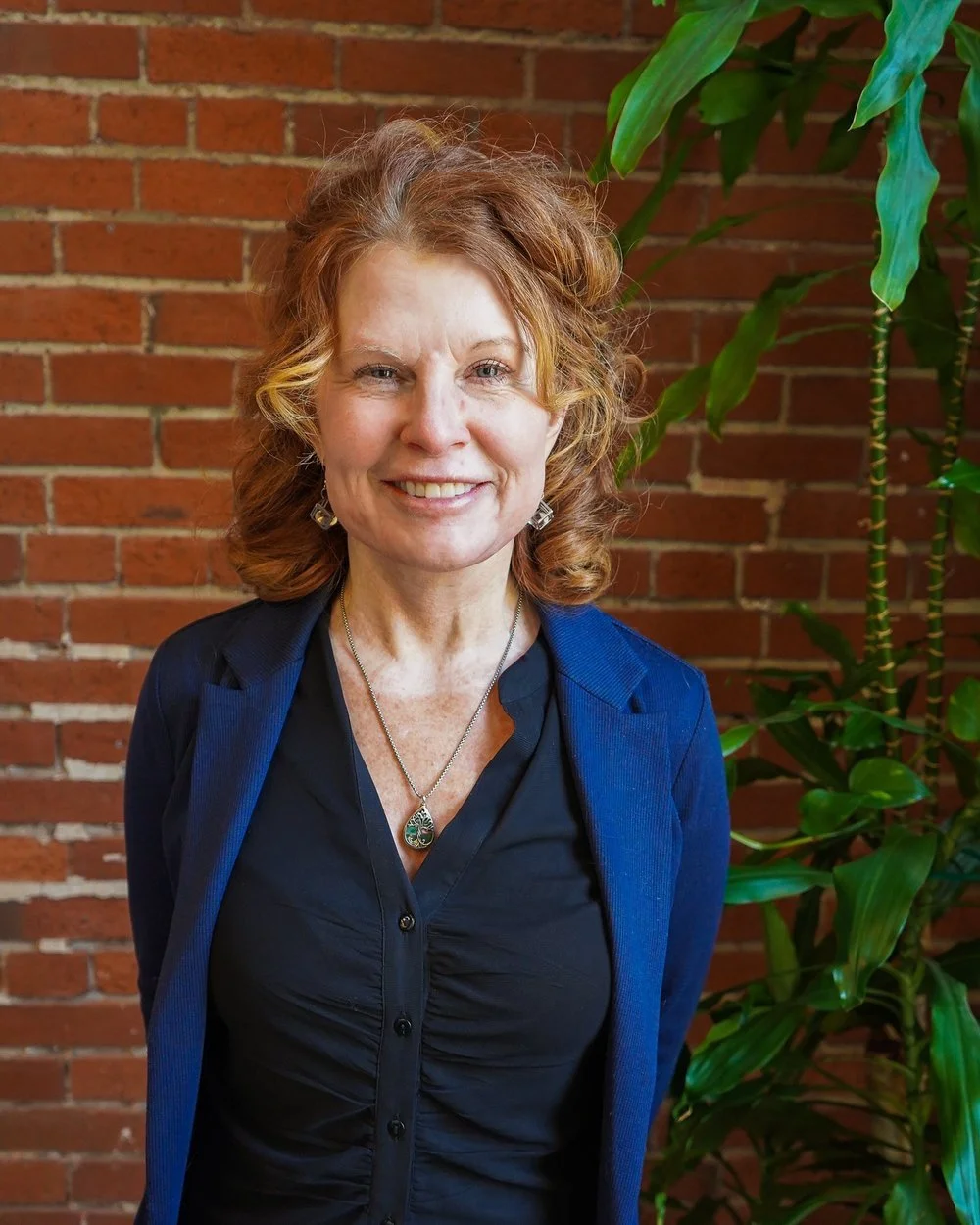Staff Spotlight: Vernita Ediger
Vernita directs our public forestlands program, advancing our vision for forest health, climate resilience, rural economic development, and Tribal partnerships across public forests in the Pacific Northwest.
“Instead of throwing up their hands and saying public land management is super complex and has too many problems to solve, SNW does a deep dive into those complexities. At SNW, I get to identify barriers to landscape-scale forest restoration, innovate around those barriers, and craft workable solutions. That’s just beautiful.”
How did your childhood influence your decision to work in sustainability?
I grew up in John Day, Oregon, where my father is a 4th generation cattle rancher and the high school biology teacher, if you know what I mean. My childhood was spent riding horses, moving cattle, changing irrigation pipes, and ensuring I had the best insect collection in the 7th grade. My dad was engaged in working landscape conservation before I knew what that was, and I just thought everybody ranched that way. I watched my community suffer as litigation of forest projects became common. Storefronts shut down, my uncle, a logger, lost his job, and my class size shrunk. I remember thinking, ‘There's got to be a way for rural communities to thrive and to maintain healthy forest and grassland ecosystems.’ I was really interested in creating a career at the nexus of rural vitality and ecologically sustainable ranching and forestry.
How did your educational and career path lead you to Sustainable Northwest?
My path hasn’t been straightforward. My undergraduate degrees are in biology and writing. I love finding the right words to communicate complex ideas to lay audiences. I spent a summer as a science writing intern at The San Francisco Chronicle. Moving from John Day to Berkeley, even for a summer, was a culture shock.
I took a brief foray into neuroscience and studied in England for 2 years, where I researched synaptogenesis and neural regeneration using cockroaches as an invertebrate model. While interesting conceptually, the day-in-day-out grind of what amounted to torturing cockroaches got pretty old.
I finally found my way, pursuing a doctorate in environmental anthropology at Stanford, where I could develop a theoretical and practical skill set in understanding the dynamic interplay between cultural systems and ecosystems. My research focused on common property theory, collaborative governance, and working landscape conservation. Conducting research with dairy farmers and beef ranchers on and off of Point Reyes National Seashore, my work analyzed the outcomes of a natural experiment set in motion by the creation of the park, asking questions about how land ownership (federal and private) mediated ecological outcomes. Land ownership systems create different legal and power dynamics, under which agriculturalists use different sociopolitical, ecological, and economic strategies to further their individual goals. Don’t get me started on talking about that… I can nerd out on it. It was a pretty fun degree.
I wanted to move closer to home, so I worked with Rural Development Initiatives (RDI), working in the rural development space, facilitating leadership trainings, and engaging in conflict resolution work. From there I was hired as the Executive Director for Blue Mountains Forest Partners out of John Day. I was so excited to be back working in my hometown! It was a critical time for BMFP since the 10-year Stewardship had just hit the street, and members of the industry were competing with each other for the work. It was a dream come true, and I felt I’d come full circle from my youth, finally addressing questions at the heart of rural community vitality and forest resilience.
I was recruited to Central Oregon, where I facilitated the Deschutes Collaborative Forest Project and the Ochoco Forest Restoration Collaborative. I also served as Executive Director of the Central Oregon Forest Stewardship Foundation, where I got to shape and frame the Central Oregon Stewardship Alliance, an all-lands project for which we secured about $5.8 million for fuels reduction work on 40,100 acres and 18 different property ownerships.
I had the opportunity to teach in the Forest Ecosystem and Society Department at Oregon State University, so I moved to Corvallis. I loved my students, and it was purposeful work to support them by linking academic theory to on-the-ground practice in my classes on consensus, public lands policy, and natural resource decision-making. But I missed applied work, so when this job as Director of Public Forestlands for SNW, I was eager to apply.
What do you like most about your position at Sustainable Northwest?
I love the Sustainable Northwest team. They are innovative and bold and creative and collaborative–and I just wanted to be a part of that. One of the things I like most about this position is the opportunity to move the dial on the issues I care about related to public land management. Instead of throwing up their hands and saying public land management is super complex and has too many problems to solve, SNW does a deep dive into those complexities. At SNW, I get to identify barriers to landscape-scale forest restoration, innovate around those barriers, and craft workable solutions. That’s just beautiful.”
Passions outside of work: Mountain biking, Nordic skiing, backpacking, creative writing.
Something you think is overrated: Fireworks.
Favorite thing to do on a day off: I love to get on all my mountain biking gear and bust it out on a really good hill climb. It feels so good, I get to see some beautiful country, and it clears my mind.
Favorite place in the PNW: There is a trail I love in the Eagle Cap wilderness, out of Hurricane Creek from Copper Canyon into Swamp Lake. There is one little hanging valley that takes my breath away when you first break out of the treeline. I want to have my ashes spread there.
Book recommendation: The English Patient by Michael Ondaatje
Cats or dogs?: Cats all the way.

